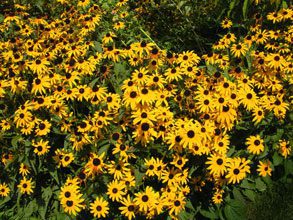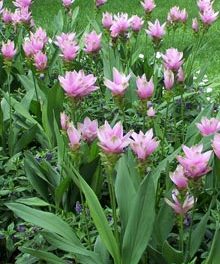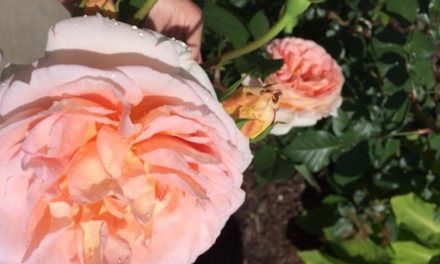 Those waves of spring-like warmth and depth-of-winter cold that have repeatedly swept over our gardens lately haven’t caused my hydrangeas to burst into bloom yet – unlike the old Kiefer pear trees which have made a gorgeous show of flowering, only to be zapped back to bare stems once the cold returned.
Those waves of spring-like warmth and depth-of-winter cold that have repeatedly swept over our gardens lately haven’t caused my hydrangeas to burst into bloom yet – unlike the old Kiefer pear trees which have made a gorgeous show of flowering, only to be zapped back to bare stems once the cold returned.
The hydrangeas, several dozen around the farmhouse and in the yard, mostly go dormant in the winter, losing their leaves and saving their energy for their big display in the late spring. Well, except for the Oak-leaf hydrangeas, Hydrangea quercifolia, which sometimes keep a reduced cover of colorful leaves through a mild winter. That’s a truly welcome sight, those big, brilliant red leaves standing out magnificently in the winter garden against the backdrop of evergreen and bare branches.
The regular hydrangeas, the “mopheads” and the “lacecaps,” H. macrophylla, are awfully plain looking this time of year. They’re mostly just bare sticks, barely branching, with their winter-brown pointed leaf buds at the tip of each stick. This winter, however, those brown dormant buds have started growing because of the warm temperatures; they’re green tips now, and obviously subject to potential damage from freezing temperatures which might still be expected before spring truly arrives. In most cases, no lasting damage will come from a light freeze, and even if the green buds turn brown, they will usually start growing leaves again.
But will they bloom?
It depends.
If the growing tips on the stems have survived the winter, and not been killed back completely (or cut off completely), then they should flower normally. The plant set its flower buds during the previous growing season, buried deep inside that tip of the stem. If that tip is killed or removed, then that stem won’t produce flowers that year.
There are some new varieties of hydrangea which claim to bloom all summer long. Believe me, it is pretty often an exaggeration in our gardening climate in the Lowcountry. The reason they are supposed to have a longer bloom season, though, is that these newer varieties are genetically disposed to bloom on new growth, as well as on last season’s overwintered stems. This can be a definite benefit in those years when you’ve lost the old stems’ growth tips to a bad freeze or other damage.
This leads to another, somewhat related question: when should you prune your hydrangeas?
Again, it depends.
Be certain you know exactly why you want to prune the shrubs. Have they just gotten way too big and sloppy, and you just want to get them to a more manageable size? Would it matter terribly if you missed one season of bloom, but could look forward to a spectacular bloom season the following year? In that case, you could completely cut back to eight or ten inches from the ground all the stems; the best time would be after the worst freezes are expected to have passed and before major growth has begun in spring. This will encourage very vigorous new growth from the base of the plant, but the new growth is unlikely to bloom that first spring. If you select to prune out the weaker new growth, and leave only the most vigorous stems to grow, you should get massive bloom heads the next blooming season.
Do you want to prune to improve the plant’s health, improve airflow through the plant to reduce fungal growth and other disease issues? You can prune out all the oldest, the weakest, and the least healthy of the stems – cutting near the base of the stem – at almost any time.
Do you want simply to keep the shrub youthful and vigorous, but not lose a season of bloom? Look at the bare stems in winter, when it’s easiest to examine the plant, count the number of stems growing healthily, and remove a third of the stems at the base of each stem. If your plant has eight stems, you’d identify the oldest, weakest two or three stems and cut them off at the base. Then you’d plan to do this every winter, before the growth starts in spring. This way, you get a completely new plant every three years – a fountain of youth!
I owe a debt of gratitude to the Dataw Island Garden Club, who recently invited me to give a presentation on Hydrangeas in the Lowcountry. We could have talked for another hour after our allotted time forced us to stop, but the questions and observations of these amazing gardeners are what got me thinking about this topic for all you readers. It’s that time of year, and getting ready for spring is essential right now!
Clemson University offers fantastic resources for the gardener; go online to HGIC.CLEMSON.EDU, and there are hundreds of factsheets available on every gardening topic imaginable. There’s a “what do you want to learn” box at the top of the page, and if you type in “hydrangeas,” there’s a list of factsheets on hydrangeas for you to use.
You can also go to the Clemson Extension Office in Burton for info and factsheets; and you can befriend a Master Gardener for wonderful pointers, as well. Twenty-twenty – the Year of the Hydrangea!







